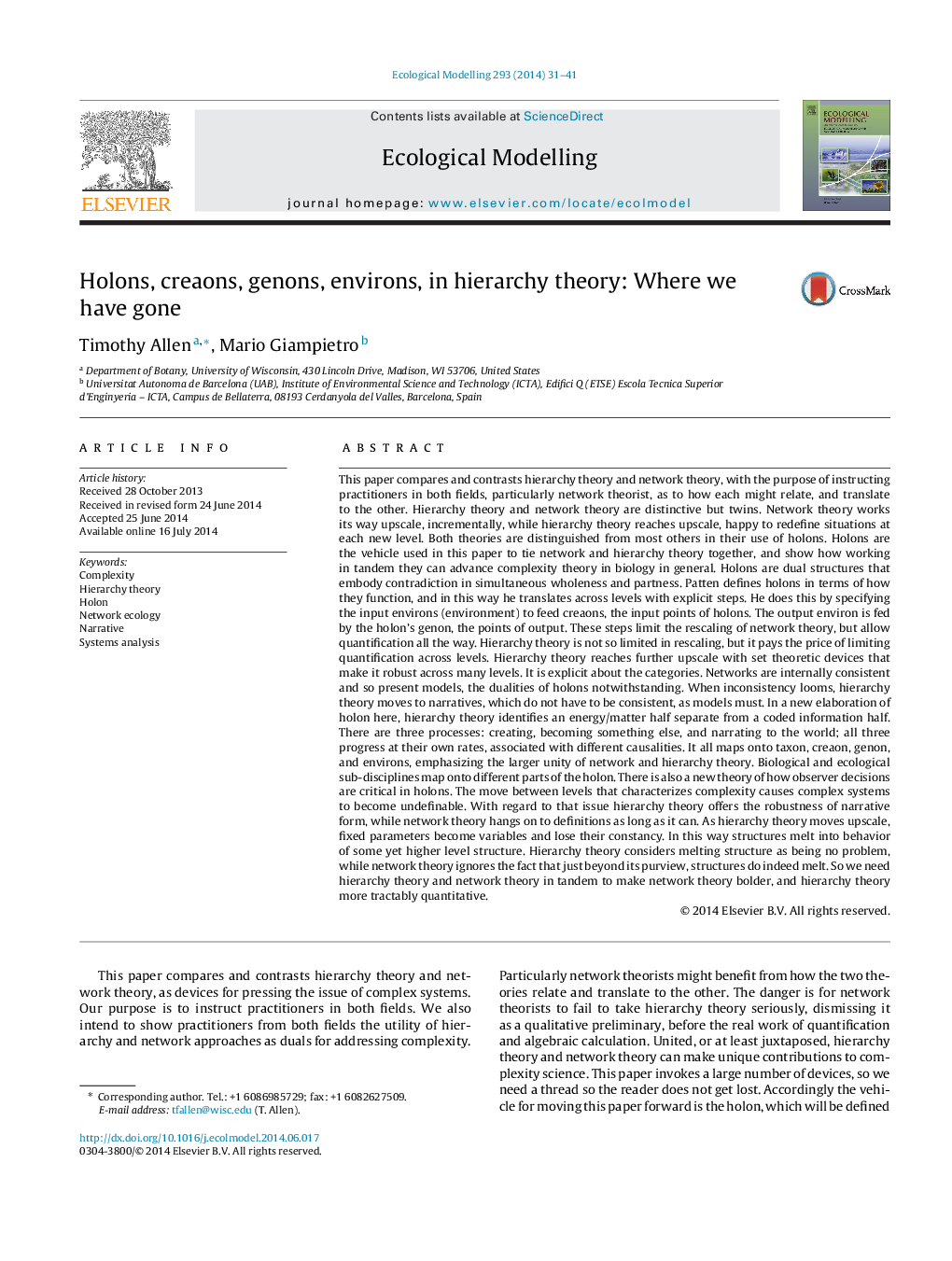| کد مقاله | کد نشریه | سال انتشار | مقاله انگلیسی | نسخه تمام متن |
|---|---|---|---|---|
| 4375789 | 1617453 | 2014 | 11 صفحه PDF | دانلود رایگان |

• Networks quantify, hierarchies qualify.
• Networks model, while hierarchies narrate.
• Holons, creons, genons and environs (both input and output) allow networks to move upscale quantitatively.
• Hierarchy theory identifies the Aristotelian causes in functioning of holons.
• Different sub-disciplines map onto the parts of the holon.
This paper compares and contrasts hierarchy theory and network theory, with the purpose of instructing practitioners in both fields, particularly network theorist, as to how each might relate, and translate to the other. Hierarchy theory and network theory are distinctive but twins. Network theory works its way upscale, incrementally, while hierarchy theory reaches upscale, happy to redefine situations at each new level. Both theories are distinguished from most others in their use of holons. Holons are the vehicle used in this paper to tie network and hierarchy theory together, and show how working in tandem they can advance complexity theory in biology in general. Holons are dual structures that embody contradiction in simultaneous wholeness and partness. Patten defines holons in terms of how they function, and in this way he translates across levels with explicit steps. He does this by specifying the input environs (environment) to feed creaons, the input points of holons. The output environ is fed by the holon's genon, the points of output. These steps limit the rescaling of network theory, but allow quantification all the way. Hierarchy theory is not so limited in rescaling, but it pays the price of limiting quantification across levels. Hierarchy theory reaches further upscale with set theoretic devices that make it robust across many levels. It is explicit about the categories. Networks are internally consistent and so present models, the dualities of holons notwithstanding. When inconsistency looms, hierarchy theory moves to narratives, which do not have to be consistent, as models must. In a new elaboration of holon here, hierarchy theory identifies an energy/matter half separate from a coded information half. There are three processes: creating, becoming something else, and narrating to the world; all three progress at their own rates, associated with different causalities. It all maps onto taxon, creaon, genon, and environs, emphasizing the larger unity of network and hierarchy theory. Biological and ecological sub-disciplines map onto different parts of the holon. There is also a new theory of how observer decisions are critical in holons. The move between levels that characterizes complexity causes complex systems to become undefinable. With regard to that issue hierarchy theory offers the robustness of narrative form, while network theory hangs on to definitions as long as it can. As hierarchy theory moves upscale, fixed parameters become variables and lose their constancy. In this way structures melt into behavior of some yet higher level structure. Hierarchy theory considers melting structure as being no problem, while network theory ignores the fact that just beyond its purview, structures do indeed melt. So we need hierarchy theory and network theory in tandem to make network theory bolder, and hierarchy theory more tractably quantitative.
Journal: Ecological Modelling - Volume 293, 10 December 2014, Pages 31–41